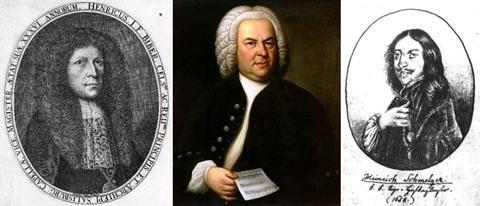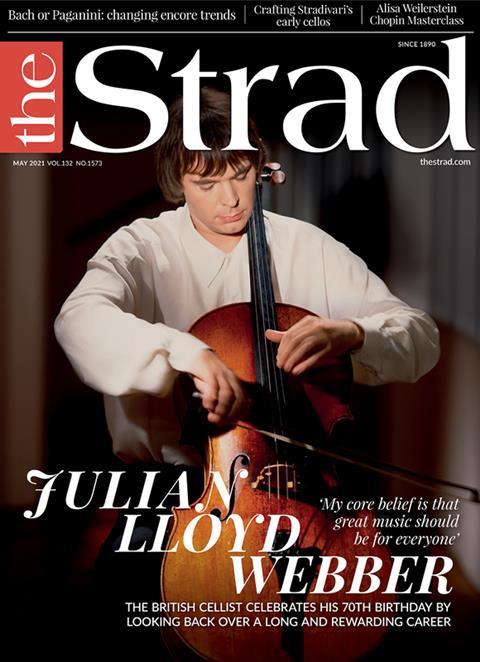Conservatoires should do more to make 17th-century music a fundamental part of the curriculum, writes Walter Reiter

The distinction between early music and, well, not-so-early music is, in my view, absurd, artificial and detrimental to the musical and cultural development of tomorrow’s musicians. In a world where so many remarkable ‘modern’ musicians are discovering the beauty of their instruments’ Baroque ancestors, conservatoires can no longer justify marginalising the study of 17th-century music.
My first forays into the extraordinary world of Baroque music were made on my ‘modern’ violin using a gamba bow! I knew nothing about the music, but was captivated by its haunting eloquence, its shifting emotional messages and its dramatic outpourings and eccentricities. Such qualities are the essence of what is known as stylus fantasticus, from the early Italian sonatas to those of Schmelzer and Biber, where the performer is as much creator as reproducer, free to decide on tempo, rubato, dynamics, bowings, sometimes the very notes: I found those freedoms refreshing at a time when there seemed to be little opportunity for originality in the opening bars of Bruch’s First Violin Concerto.
The Baroque musician is not spoon-fed by the dots on the page, because the further back in history we travel, the sparser are the composer’s printed instructions: nuances, dynamics, articulations and so on are mostly absent. Interpretation is therefore the result of a constant quest for clues hidden within the musical text.
The bass-line, its harmonic implications containing many of these clues, is always printed underneath the violin part, so one is encouraged to see the music as a whole. One learns to glean the dynamics and phrasings from the harmony, to distinguish between more important and less important notes, and to discover the expressive power of rhythm and of intervals – for much of the music is rhetorical, more like speech than melody, necessitating the ‘speaking bow’ that Corelli advocates. One discovers one’s inner spontaneity through ornamentation. How many of us have been enjoined to ‘play what is written’ and how few of us have been encouraged to improvise extra notes that will embellish an otherwise spartan line?
Read: Opinion: Being conscious
Read: Opinion: Original and the best?
Read: Opinion: Jedi Wisdom for string playing
Baroque music connects with areas of our musical psyche that Romantic music does not reach. Through the Concerts royaux of Couperin we experience the finesse and sophistication of Louis XIV’s Versailles, while the intensely spiritual Mystery Sonatas of Biber hurtle us into zealous ecstasy. The very term ‘Baroque’ is misleading, because styles were constantly metamorphosing from year to year and from place to place. Thus, cultural and historical backgrounds need to be incorporated into our studies.
The 17th century witnessed a revolution in human expression: instrumental music, no longer serving merely to enhance a singer’s text or guide a dancer’s feet, forged a legitimate emotional language in which the rapidly evolving idiom of the violin played a central role. Such music expressed the whole gamut of human emotions, from joyous and noble optimism to the mystical yearning and the suffering of humanity in a Europe cursed by religious wars, plagues and famines.
I must confess I am saddened when I meet students of the violin to whom the exploration of a whole century of such infinitely varied music, with its countless profoundly spiritual masterpieces, is simply dismissed as off-piste. For art or literature students not to know Rembrandt or Chaucer would be a harmful omission on the part of the curriculum devisers, but it seems not to bother those who regard the geniuses of the 1600s as an unnecessary diversion from that well-trodden path leading from the concertos of Rieding to Wieniawski.
Conservatoires should go further than allotting a few hours a year to employing specialists to give classes about Bach: they should expose students to the entirety of the violin repertoire, integrating so-called early music into the curriculum to give all students the opportunity to explore the glorious repertoire of the 17th century and to feast on its treasures.
-
This article was published in the May 2021 Julian Lloyd Webber issue
The British cellist celebrates his 70th birthday by looking back over a long and rewarding career. Explore all the articles in this issue . Explore all the articles in this issue
More from this issue…
- British cellist Julian Lloyd Webber
- Crafting Stradivari’s early cellos
- Ysaÿe’s String Trio no.2
- Violinist Boris Begelman records Vivaldi
- Italian luthier Azzo Rovescalli (
- Changing violin encore trends
Read more playing content here
-












































No comments yet